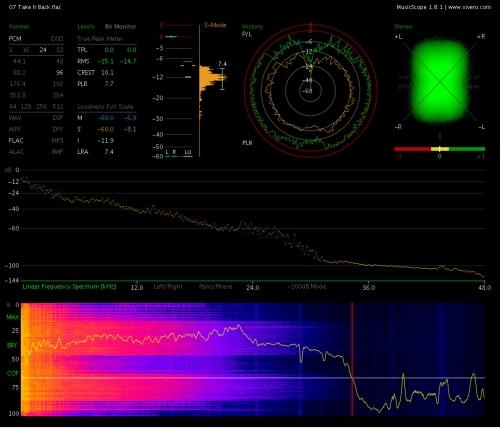
The genesis of the last album by the legendary British rock group Pink Floyd is pretty well known. With ‘Dark Side of the Moon’ the group gained international fame, not the least of which for the black album cover and the white light being broken down into its component spectral colors, but also for its acceptance into the world of four-channel surround sound technology. This download, after at least twenty years, is based on processing the original master tapes, and is joined by newly pressed and reissued LPs and CDs from that same raw material. Celebrating the twentieth anniversary of ‘The Division Bell’ it faithfully retells the tales for a generation that didn’t grow up with Pink Floyd songs. True to the motto ‘what interests us the announcement that the 13th album would be the last obe of Pink Floyd’, the musicians of the famous rock group began preparations in early 1993 for what would start in the Britannia Row Studios to be a new recording project.! ! They did so however with little confidence. But in less than two weeks, after accumulating material for 65 new songs, their confidence in the new project grew. It was at this time that they relocated it to the floating recording studio, Astoria. And it was here that the members of the band voted on the fate of the material that had been so quickly recorded; and finally chose the 11 songs for the album. Interestingly, after reflecting on the process, they also took the whimsical suggestion of famous British science fiction writer Douglas Adams to call the album ‘The Division Bell’ inspired by the bell that calls for a vote in the British Parliament. The ‘Division Bell’, Pink Floyd’s fourteenth album, was then finally completed in less than a week at its third recording venue.
Since Pink Floyd has always been, perhaps disconcertingly, eager to make each album a work of art with a high level of visual appeal, the designer of the artwork for ‘The Dark Side of the Moon’, Storm Thorgerson, was called on to take on this project. And for this cover he created two strangely coupled, larger than life, sculptures made of metal – two interconnected creatures merging to form a single face.
The rest is rock history. For weeks after its release, the 14th Pink Floyd album was #1 on the charts in Germany, Austria, UK, the United States, and Switzerland. 12 million albums sold over the counter. And as always with Pink Floyd, 'The Division Bell' came under criticism; in this case as a monstrous work of music, infused with lust, and full of self adulation. With the distance of two decades you’d think it would connect with the public as it did with Pink Floyd fans then – songs by the Britiish rockers which are nothing more than a multi-form work of this genre, and not what the men and women of the yellow press, who wrote so badly of them, would have you believe. Perhaps there was simply a lack of the basic understanding of music, and a love of reading their own quotes. The first track in ‘The Division Bell‘ – ‘Cluster One’– steals several clusterbased classical compositions the show as a skillfully done cluster of self adulations.
Pink Floyd has always been known for exquisite sound. Nothing is truer. ‘The Dark Side of the Moon’ set new standards in audiophile circles. And ‘The Division Bell’ represents nothing less than the same high level of sonic quality. After twenty years, ‘The Division Bell’ is a thoroughly recommended album by a unique rock group.
We listened to this 96 kHz 24-bit FLAC download in an acoustically optimized listening room, through Revel Gem2/B15a loudspeakers, driven by a custommade PWM digital amplifier; with its SPDIF input connected directly to a dedicated audio computer for the downloaded data.

Spectrogram
Sampling rate 96 kHz: verified Bit depth 24 bit: okay
Commentary
Lush overtone spectrum up to 30 kHz.








